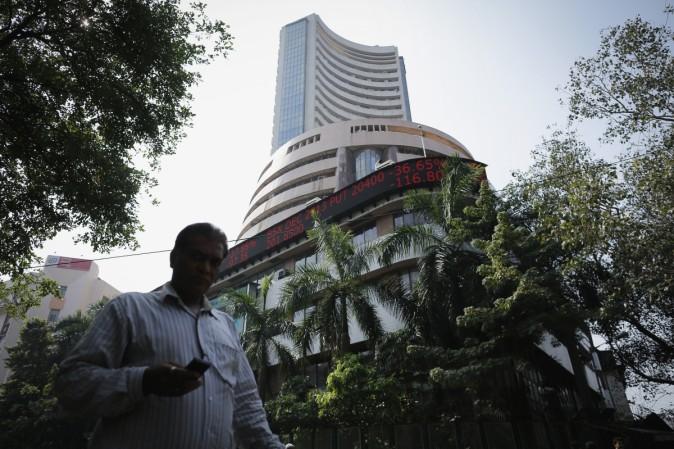
After a long and exhausting election schedule, results are finally out, with the incumbent government coming back to power. If Narendra Modi's 2014 popular mandate was India's biggest in three decades, his 2019 re-election is an even bigger feat. The market has given initial reaction to the political outcome and it may last for another couple of days.
When the dust settles, the markets will take the major direction based on the fundamental parameters in the medium to long run. While there are opportunities, the markets may face headwinds in the near term which may cap the upside in the coming months. India is facing liquidity driven cyclical slowdown which is a worry for investors, as well as the companies. The world economy is facing risks with trade wars between the US and China, the two largest economies in the world have the potential to derail the world economy.
A strong government is always a boon for the economy in the long run. The government will now focus more on the improvement in ease of doing business with a more focused approach on infrastructure development. On the other hand, it may also have the courage to take tougher decisions following the strong mandate in general elections.
A great opportunity
On the domestic front, the government has made progress on fiscal consolidation which has come down from 4.6 percent of GDP in March 2014 to 3.4 percent of GDP in FY 2018-19. This is still high and leaves little room for manoeuvre. However, it can certainly help revive the economy as government spending had slowed down ahead of the elections. Much of the heavy lifting has to be done by the RBI, which has conducted OMO and FX swaps to restore liquidity. Low inflation opens the door for rate cuts but with the joint efforts by the RBI and the Finance Ministry, the economy could revive in a couple of quarters. The government should now act on rationalizing the previous reforms and work on removing any glitches. Restructuring GST, addressing liquidity crunch and mitigating rural distress would be the major priorities.
With landmark electoral verdicts comes a great opportunity for implementing bold economic decisions and thereby create positive market movement. The benchmark indices broke records with Nifty crossing the 12,000 mark and the Sensex crossing the 40000 levels for the first time in India's history. Now the million dollar question will be whether to book profits or hold on to the further gains. Here the answer depends on the time horizon and profit booking at this stage would depend on investor outlook.
The next couple of years could be good for domestic equities and those with a longer-term view will get spectacular returns if they hold their nerves. An investor who wants to take a calculated risk and has a time horizon of 4-5 years may start accumulating quality stocks from current levels. Nobody can catch the bottom and the top for the equities but the overall view remains positive in the long term horizon. Some hiccups may distract the investment sentiment in the short term but the path ahead seems to be pretty good for the markets.
Due to the recent market volatility, a lot of foreign and domestic investors have been on the sidelines. With the Modi government back in power, the faith of these investors is restored in the economy where an increase in the funds inflow is expected and an uptrend in the market is foreseen.

Which companies to invest in?
Now the question arises where does one invest? Which sector should one place the bets at this juncture? Even though there were significant achievements made by the Modi government in their first term, the second term is likely to see even more rapid development in the key sectors like transport, infrastructure, power and construction along with the improving the banking and finance sectors to allow more liquidity and the ease in doing business. Investing in these sectors at this point may be a good option as they are likely to grow in the following quarters. Apart from this, as the country is moving forward to a more inclusive banking system with the help of digitalization, the banks and the NBFCs are likely to be on the rise too. Stocks to bet on will be State Bank of India, ICICI BANK and HDFC Ltd in the financial space.
The construction and the cement companies are expected to garner some significant opportunities with the plans for the infrastructure development in the country, which is likely to begin in full swing once the new cabinet settles in. Railways, ports, airports, urban and rural infrastructure, redevelopment of the national and state highways, etc is likely to help these companies grow. Investing in infrastructure and industrial focused companies are likely to generate some good returns. Stocks to invest in will be KNR construction, Jain Irrigation, Menon Bearings, Coal India and Tata Sponge.
The capital goods sector has been one of the laggards for a few years now given the lack of appetite among private players. We expect the private capex should revive soon as utilization rate has improved (currently standing around 75 percent). Going forward, a good monsoon can drive consumption-led demand, which would push capacity utilization beyond 80 percent, calling for enhanced private capital spends. Larsen and Toubro will be the best proxy play to bet on the infra and capital goods from a long term perspective.
Due to higher demand for digital automation across geographies, the IT sector is poised for growth in the long run. As global economies are doing good, export-related segments like textiles and chemicals also have ample scope to grow. In textiles and chemicals, India scores better due to lower labour cost, talented workforce and stringent intellectual property laws. If further sanctions are imposed on China, India would have a competitive advantage in these industries. Stock to watch out will be Tata Elxsi and NIIT Technologies in the IT space.
As there has been a slowdown in the recent auto sales volumes because of the liquidity crunch and lower credit off take, the automakers are likely to get a boost in the coming quarters once the dust settles on the liquidity front. Investors may look on for accumulating quality auto stocks as well for long term perspective. The trend ahead is going to be of the CNG cars and EVs, so investment in this sector now is a good option, because, in the long run, it may give good returns. One can look for investing in M&M and Mahindra CIE Automotives in the auto space.
[Rajiv Singh is the CEO of Karvy Stock Broking. The views and opinions expressed in this article are those of the author and do not reflect those of International Business Times, India]














